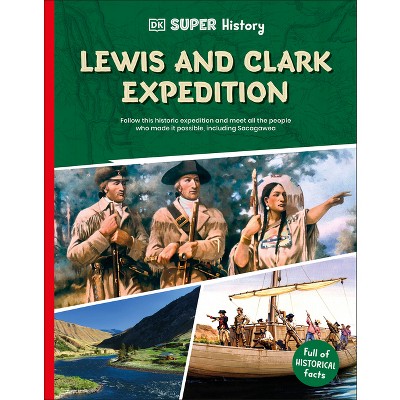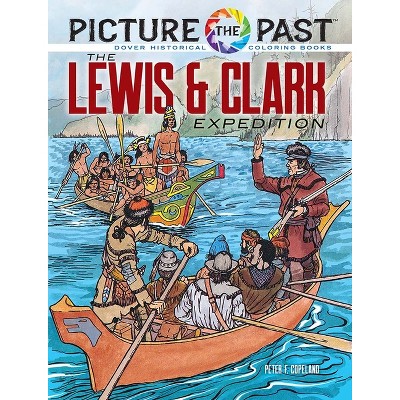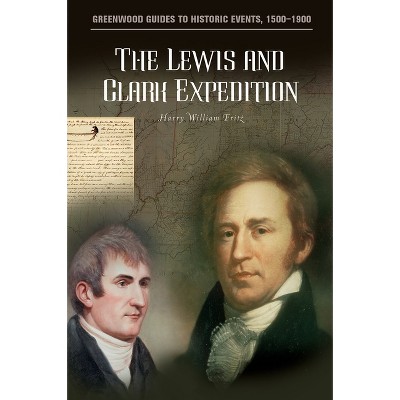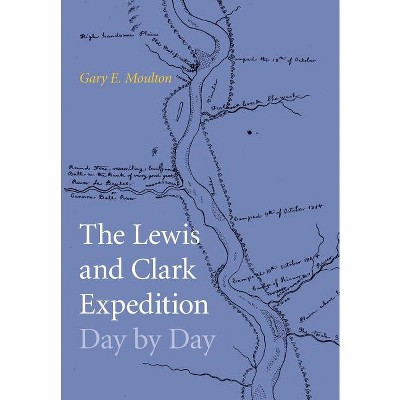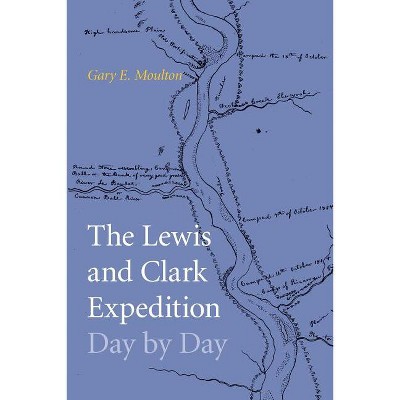Sponsored

The Salish People and the Lewis and Clark Expedition, Revised Edition - (Hardcover)
$24.18Save $10.77 (31% off)
In Stock
Eligible for registries and wish lists
Sponsored
About this item
Highlights
- On September 4, 1805, in the upper Bitterroot Valley of what is now western Montana, more than four hundred Salish people were encamped, pasturing horses, preparing for the fall bison hunt, and harvesting chokecherries as they had done for countless generations.
- Author(s): Salish-Pend d'Oreille Culture Committee & Elders Cultural Advisory Council & Confederated Salish and Kootenai Tribes
- 216 Pages
- History, Native American
Description
Book Synopsis
On September 4, 1805, in the upper Bitterroot Valley of what is now western Montana, more than four hundred Salish people were encamped, pasturing horses, preparing for the fall bison hunt, and harvesting chokecherries as they had done for countless generations. As the Lewis and Clark expedition ventured into the territory of a sovereign Native nation, the Salish met the strangers with hospitality and vital provisions while receiving comparatively little in return. For the first time, a Native American community offers an in-depth examination of the events and historical significance of their encounter with the Lewis and Clark expedition. The result is a new understanding of the expedition and its place in the wider context of U.S. history. Through oral histories and other materials, Salish elders recount the details of the Salish encounter with Lewis and Clark: their difficulty communicating with the strangers through multiple interpreters and consequent misunderstanding of the expedition's invasionary purpose, their discussions about whether to welcome or wipe out the newcomers, their puzzlement over the black skin of the slave York, and their decision to extend traditional tribal hospitality and gifts to the guests. What makes The Salish People and the Lewis and Clark Expedition a startling departure from previous accounts of the Lewis and Clark expedition is how it depicts the arrival of non-Indians--not as the beginning of history but as another chapter in a long tribal history. Much of this book focuses on the ancient cultural landscape and history that had already shaped the region for millennia before the arrival of Lewis and Clark. The elders begin their vivid portrait of the Salish world by sharing creation stories and their traditional cycle of life. The book then takes readers on a cultural tour of the Native trails that the expedition followed. With tribal elders as our guides, we now learn of the Salish cultural landscape that was invisible to Lewis and Clark. The Salish People and the Lewis and Clark Expedition also portrays with new clarity the profound upheaval of the Native world in the century before the expedition's arrival, as tribes in the region were introduced to horses, European diseases, and firearms. The arrival of Lewis and Clark marked the beginning of a heightened level of conflict and loss, and the book details the history that followed the expedition: the opening of Salish territory to the fur trade; the arrival of Jesuit missionaries; the establishment of Indian reservations, the non-Indian development of western Montana; and, more recently, the revival and strengthening of tribal sovereignty and culture. Conveyed by tribal recollections and richly illustrated, The Salish People and the Lewis and Clark Expedition not only sheds new light on the meaning of the expedition; it also illuminates the people who greeted Lewis and Clark and, despite much of what followed, thrive in their homeland today.Review Quotes
"Through this multi-voiced tribal history of the Salish people and homeland, we come to understand the Lewis and Clark Expedition as one small moment in a vast narrative of Salish history. We see that Lewis and Clark were traveling through a deeply storied Indigenous homeland, mapped through placenames, which each carry their own stories of creation and continuation. . . . This book gives all of its readers the opportunity to listen, to pay attention, and to learn. The Salish People and the Lewis and Clark Expedition is a model for how to create a collective tribal history, based on a collaborative, intergenerational process. The awe-inspiring images and words are a gift, not only for the community today, but for future generations."--Lisa Brooks, author of Our Beloved Kin: A New History of King Philip's War
"[An] informative volume compiled by elders of the affiliated Salish, Pend d'Oreille, and Kootenai tribes. The book is richly illustrated with contemporary and historical art and photography."--We Proceeded On
"[A] remarkable and beautifully produced book. . . . It flips the standard lens of history to portray a critical American historical event from the perspective of the Salish people of western Montana. . . . Perhaps the most important reason the authors were able to write such a compelling narrative is the three decades of cultural preservation work, including extensive interviews with tribal elders that have been recorded and stored in the tribal community. This truly beautiful book is a community-based project."--David R.M. Beck, Oregon Historical Quarterly
"A beautifully illustrated book built upon the foundation of tribal oral tradition."--Journal of the West
"A refreshing account of the meeting between the Salish and expedition members."--South Dakota History
"From Elders to authors to publishers, all stress a similar theme--the book finally gives American Indians a chance to tell their own story."--Peter Bulger, The Missoulian
"It may provoke some fans of Jefferson and/or the Lewis and Clark expedition to echo the question sometimes attributed to General Custer and Little Big Horn: 'Where did all these Indians come from?'"--John Goodspeed, The Star-Democrat
"Superb. . . . A unique Native American history. . . . A model for other Indian groups to follow in reconstructing their own history."--Howard R. Lamar, Sterling Professor Emeritus of History and former president of Yale University-- (5/7/2011 12:00:00 AM)
"The indigenous peoples of the United States have the benefit of a recent view of history. The tradition of oral history is also of great worth. 'The Salish People' preserves the viewpoint of the conquered. It also highlights the fact that all Montana's tribes are at a crossroads. I give this book a thumbs up."--Billings Outpost
"With this book of sacred texts, legends, and narratives presented with significant scholarly attention and consideration, the Salish people proudly take their place at the academic table. We are treated to an exceptional journey into oralcy and oral history, manifesting a truly unique Native perspective and epistemology."--Jay Hansford C. Vest, American Indian Quarterly -- (4/6/2011 12:00:00 AM)
Dimensions (Overall): 7.8 Inches (H) x 9.94 Inches (W) x .81 Inches (D)
Weight: 1.85 Pounds
Suggested Age: 22 Years and Up
Number of Pages: 216
Genre: History
Sub-Genre: Native American
Publisher: University of Nebraska Press
Format: Hardcover
Author: Salish-Pend d'Oreille Culture Committee & Elders Cultural Advisory Council & Confederated Salish and Kootenai Tribes
Language: English
Street Date: September 1, 2019
TCIN: 88976927
UPC: 9780803243118
Item Number (DPCI): 247-57-0044
Origin: Made in the USA or Imported
If the item details aren’t accurate or complete, we want to know about it.
Shipping details
Estimated ship dimensions: 0.81 inches length x 9.94 inches width x 7.8 inches height
Estimated ship weight: 1.85 pounds
We regret that this item cannot be shipped to PO Boxes.
This item cannot be shipped to the following locations: American Samoa (see also separate entry under AS), Guam (see also separate entry under GU), Northern Mariana Islands, Puerto Rico (see also separate entry under PR), United States Minor Outlying Islands, Virgin Islands, U.S., APO/FPO
Return details
This item can be returned to any Target store or Target.com.
This item must be returned within 90 days of the date it was purchased in store, shipped, delivered by a Shipt shopper, or made ready for pickup.
See the return policy for complete information.






